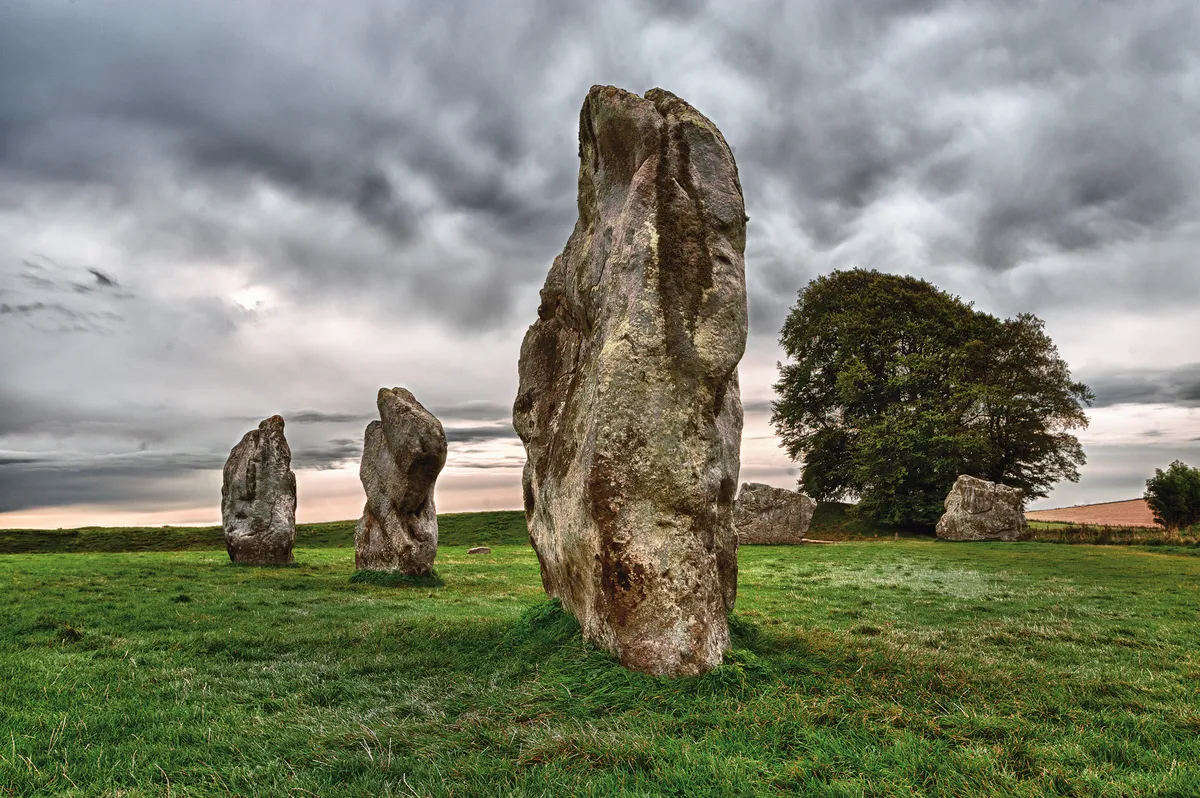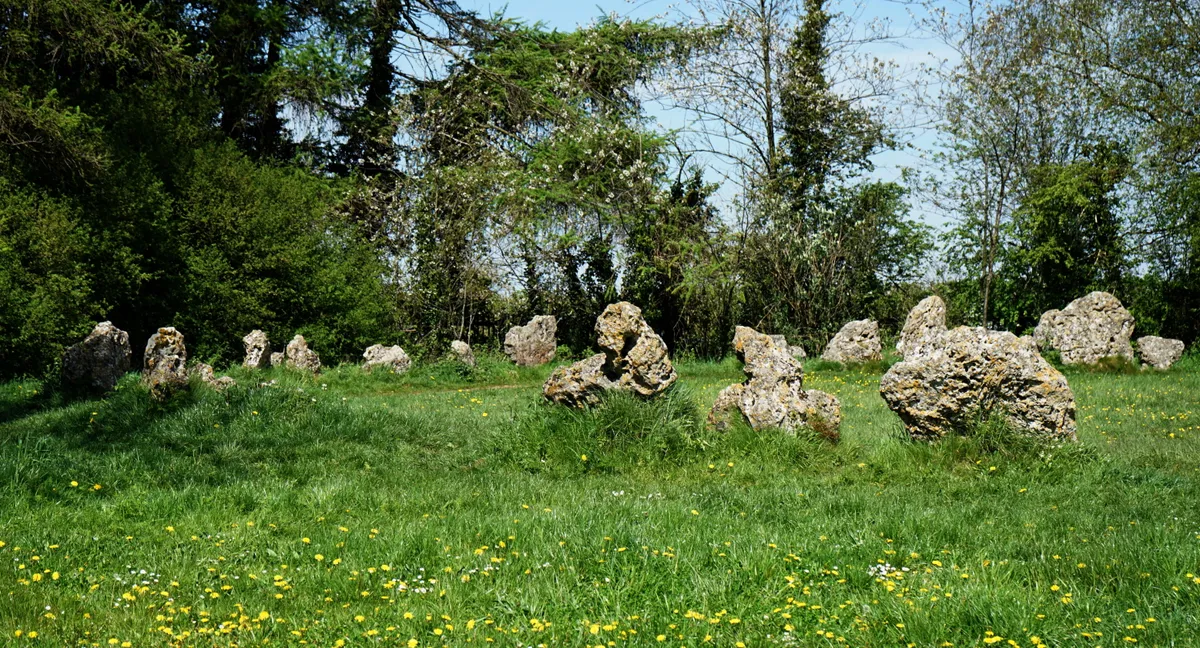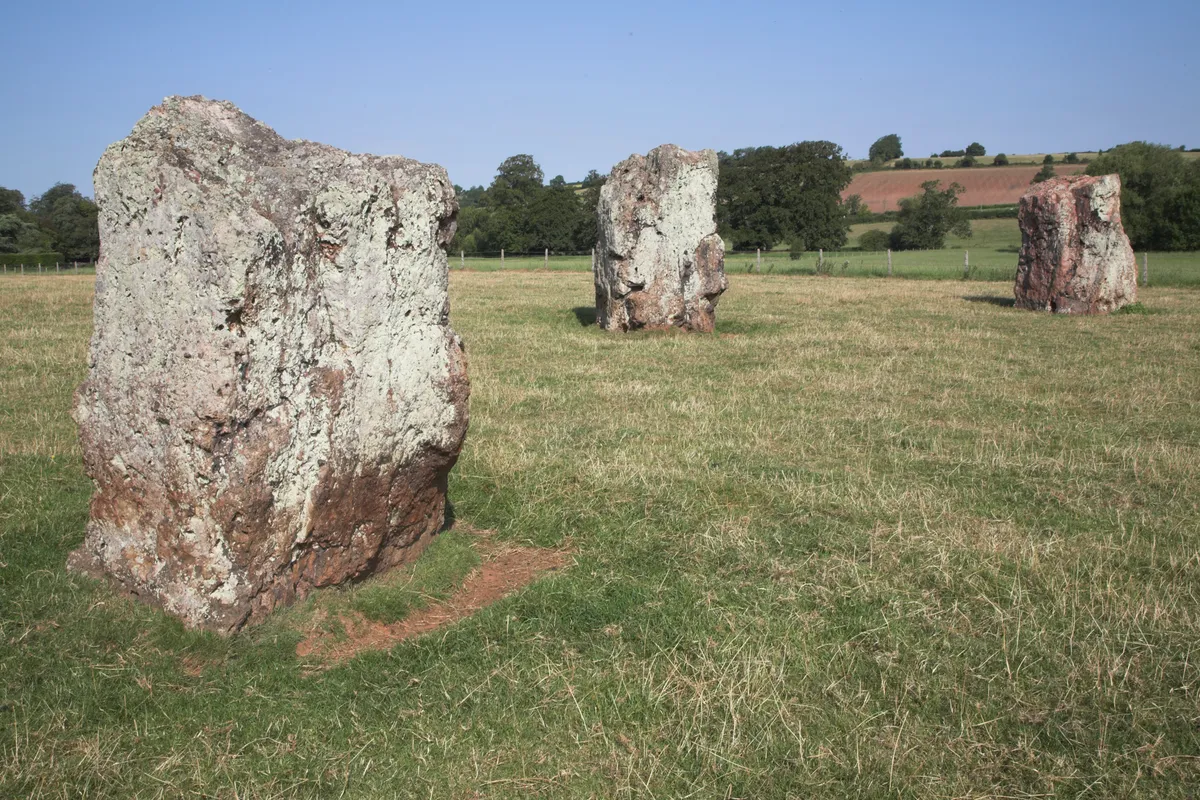There are few prehistoric structures more illustrious than Stonehenge. Yet, England's south-west is peppered with Neolithic monuments, each as intriguing as the next. Indeed, so important are the sites, that many musicians have found inspiration in from their existence, from Peter Gabriel to Traffic.
Discover four lesser-known Neolithic sites with songs to accompany, all within 35 miles of Stonehenge.
1. Avebury Stone Circles / Silbury Hill / West Kennet Long Barrow, Wiltshire

This impressive example of prehistoric monuments was the inspiration for Nick Harper's Avebury Song. The Avebury site lies just 23 miles from Stonehenge and comprises three significant features:
- Avebury Stone Circles – a large circular bank and ditch, this henge originally included 100 stones, making it the largest stone circle in Britain.
- Silbury Hill – as with many prehistoric structures, the original purpose of Silbury Hill remains unknown. It is the largest man-made mound in Britain, comparable in size to the pyramids of Egypt.
- West Kennet Long Barrow – park in the A4 lay-by and follow signs for half a mile through farmland to reach the long barrow. The chambered tomb was built around 3650BC.
Visit The Red Lion in Avebury's village centre for refreshments.
2. Rollright Stones, Long Compton, Oxfordshire

The Rollright Stones complex consists of three main elements:
- The King Stone – a large monolith with a bulbous head. In the 19th century, drovers would chip small pieces – thought to be lucky charms – from the Middle Bronze Age stone, giving it its unusual shape.
- The Whispering Knights – a 5000-year-old burial chamber.
- The Kings Men stone circle – comprised of 77 stones of local limestone.
"Went to see the Standing Stones; some in circle, some alone, ancient, worn and weather torn," wrote Traffic in their song Rollright Stones.
3. Stanton Drew Circles and Cove, Somerset

The third largest complex of prehistoric standing stones in England, Stanton Drew Circles and Cove rise from a field just outside the village of Stanton Drew. The Wedding at Stanton Drew, preformed by the Bully Wee Band tells a story of the devil turning up at a wedding with a fiddle in tow.
For those keen for a walk, begin at The Rising Sun in Pensford and follow the River Chew west for two miles until you reach the stones. The Druids Arms – with a standing stone in the pub garden – is a great place to have lunch before returning to Pensford.
4. Little Solsbury Hill, Somerset
Occupied as an Iron Age hill fort between 300BC and 100BC, Little Solsbury Hill can be reached on foot from Batheaston, Somerset. The hill, at 191m, gifts broad views over Bath and the River Avon.
In his song Solsbury Hill, Peter Gabriel wrote, “Climbing up on Solsbury Hill, I could see the city light. Wind was blowing, time stood still, eagle flew out of the night.”

